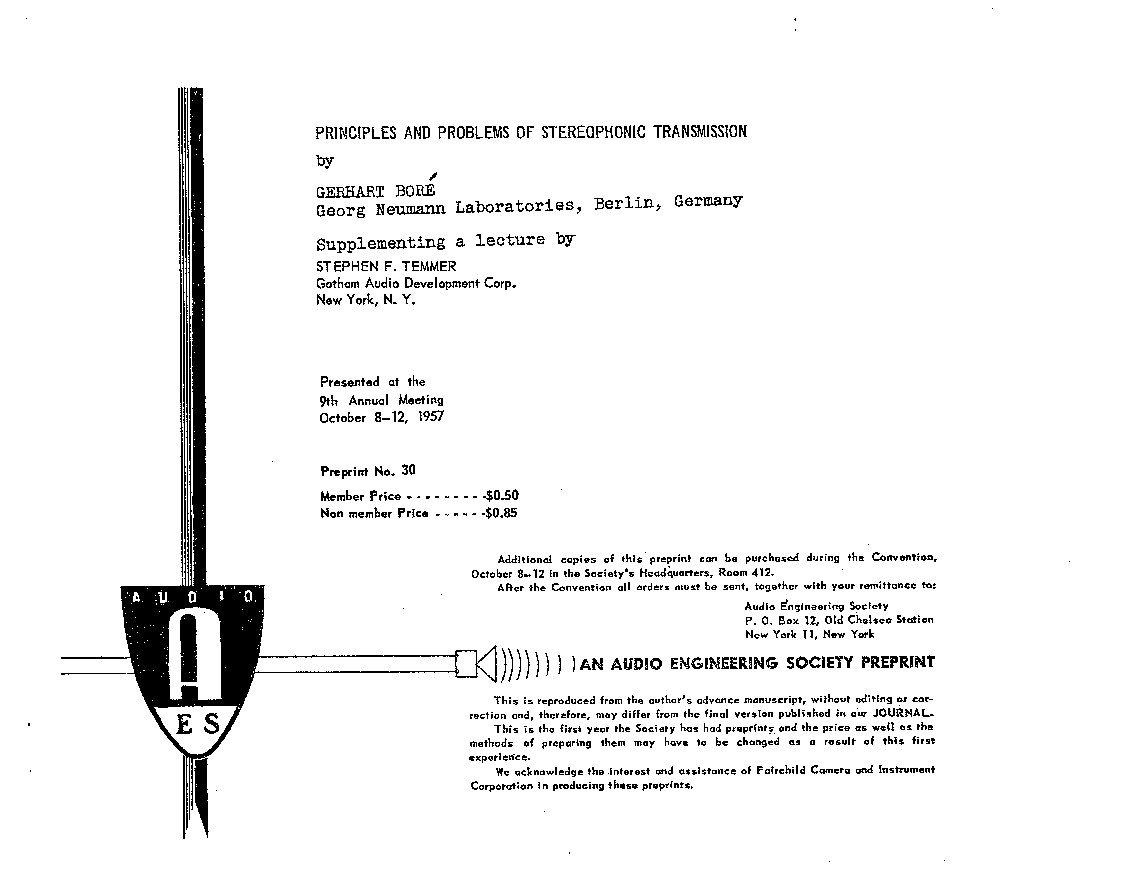Home / Publications / E-library page
You are currently logged in as an
Institutional Subscriber.
If you would like to logout,
please click on the button below.
Home / Publications / E-library page
Only AES members and Institutional Journal Subscribers can download
In the quest for more and more faithful reproduction by electro-acoustic means, after all the possibilities afforded by single-channel transmission have been exhausted, substantial improvements can only be achieved by multi-channel stereophonic transmission. A few of the factors that play a part in this type of sound transmission have been known for about 30 years. Some of these, however, can only be understood and correctly reformulated in the light of recent discoveries in the physiology of hearing, and a number of questions still remain to be answered. In considering the practical means employed for stereophonic transmission, it seems that development hitherto has not led to a single optimum, but to a number of solutions of apparently equal value. In this article, after a summary of the most important principles, a survey will be attempted of proven methods of transmission, and a few examples of their application will be given.
Author (s): Boré, Gerhart
Affiliation:
Georg Neuman Laboratories, Berlin, Germany ; Gotham Audio Development Corp., New York, NY
(See document for exact affiliation information.)
AES Convention: 9
Paper Number:30
Publication Date:
1957-10-06
Import into BibTeX
Permalink: https://aes2.org/publications/elibrary-page/?id=188
(400KB)
Click to purchase paper as a non-member or login as an AES member. If your company or school subscribes to the E-Library then switch to the institutional version. If you are not an AES member Join the AES. If you need to check your member status, login to the Member Portal.

Boré, Gerhart; 1957; Principles and Problems of Stereophonic Transmission [PDF]; Georg Neuman Laboratories, Berlin, Germany ; Gotham Audio Development Corp., New York, NY; Paper 30; Available from: https://aes2.org/publications/elibrary-page/?id=188
Boré, Gerhart; Principles and Problems of Stereophonic Transmission [PDF]; Georg Neuman Laboratories, Berlin, Germany ; Gotham Audio Development Corp., New York, NY; Paper 30; 1957 Available: https://aes2.org/publications/elibrary-page/?id=188